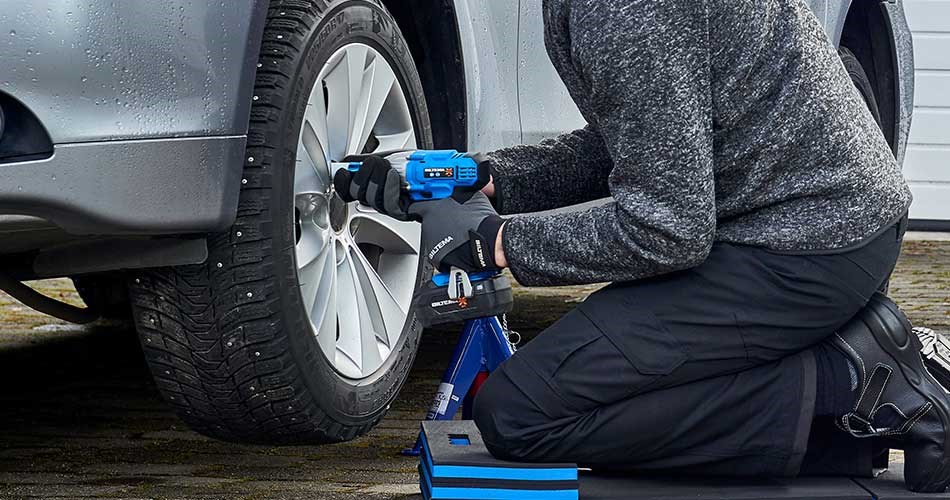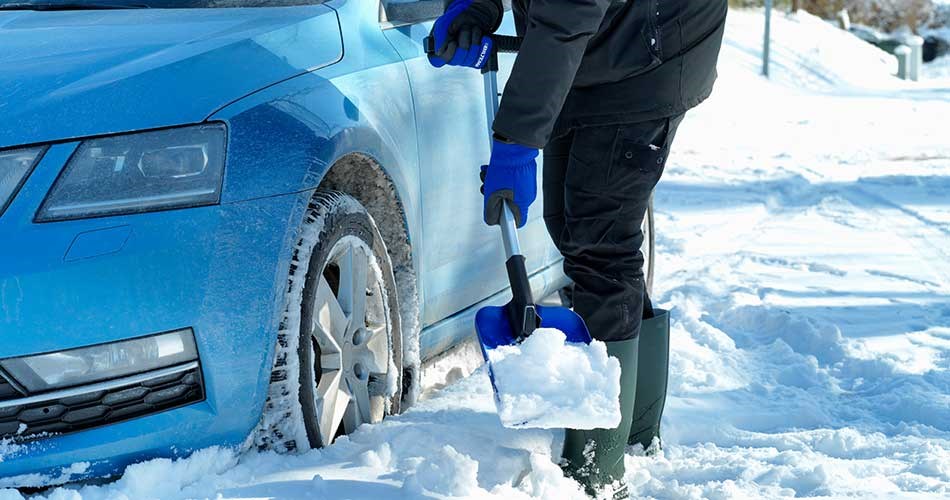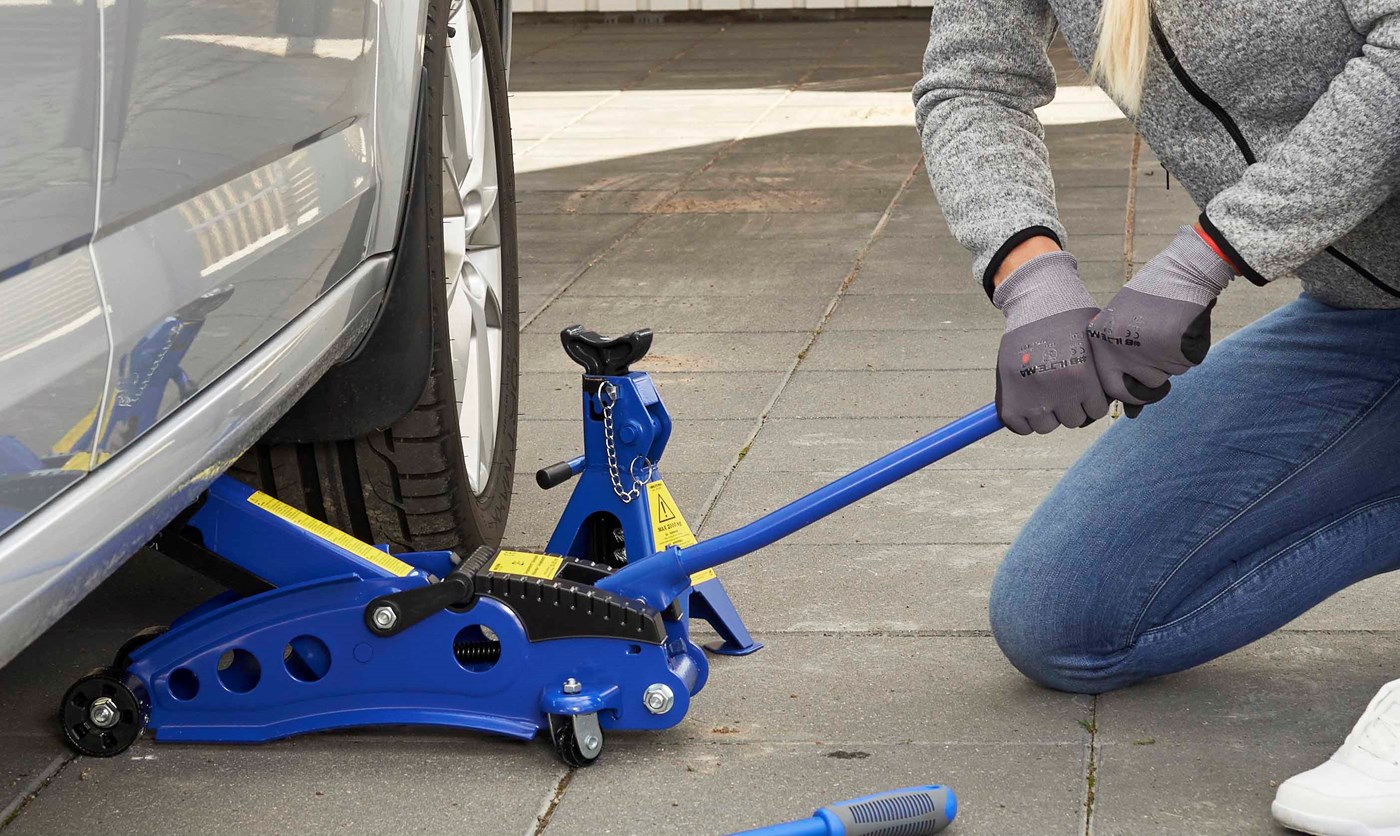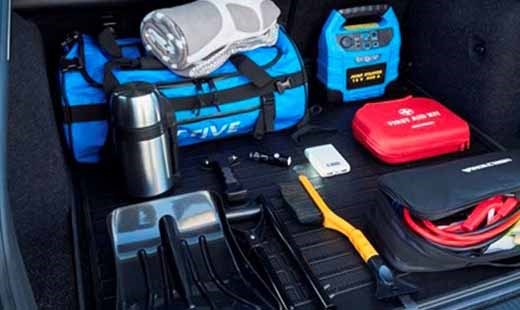Guide: Changing to winter tyres
In this guide, we take a deep dive into the many questions that you probably have so that you can get started preparing your car for Danish winter.
What are winter tyres?
Winter tyres are specially designed tyres that provide the best performance in cold and slippery winter conditions. These tyres are characterised by their unique treads and rubber compound developed to provide better traction on the road when it is covered in ice, snow or sleet.
Winter tyres are often tyres where the rubber block in the tread is divided into a number of lamellae. The structure ensure that the tyre is self-cleaning and can transfer more steering and braking forces from the wheels to the road, which is essential for winter weather.

Why you need to remember to change to winter tyres
Many drivers choose to use all season tyres, but there are actually many good reasons to change to winter tyres when temperatures start to fall, even if it is not a legal requirement in Denmark. We have put together five good reasons as to why you should consider changing to winter tyres.
- Optimal grip and traction: Winter tyres are specially designed to perform in winter weather conditions. They have unique treads and a special rubber compound that provides better grip and traction on icy and snowy roads.
- Better braking distance: Winter tyres have a far shorter braking distance on snow than all season and summer tyres. This means you can stop your car faster and avoid dangerous situations in traffic.
- Good control: Winter tyres give you a better feel for a control of your car, when there is snow and sleet. This could be crucial for your safety when driving in winter weather.
- Reduce the risk of aquaplaning: Winter tyres are designed to minimise the risk of aquaplaning. This occurs when the car loses traction because there is too much water on the road.
- All types of winter roads: Winter tyres can increase your safety on all cold roads, regardless of whether you are driving on an icy country road or a snow-covered residential road.
Even though it may seem quite difficult to change to winter tyres, there are many good reasons to do so once temperatures start to fall. It is an investment that can make a big difference for yours and others safety on the road.
When should you change to winter tyres?
Do you know when it is best to change to winter tyres? There are a few general guidelines that are good to follow so that you start to think about changing tyres before snow starts to fall.
- A good rule of thumb is that you should start thinking about changing to winter tyres when we reach the autumn break, or when the temperature falls below seven degrees. This is when winter tyres will be a good idea.
- If you want to use studded tyres, you are allowed to do so in Denmark from 1 November to 15 April, so you need to change tyres within that timeframe.
- After you have changed to winter tyres, remember that they will need to come off again when it is time to use summer tyres. We recommend that you do so around Easter or when the temperature rises above seven degrees. See how to change to summer tyres here.
- It is not a legal requirement to change to winter tyres in Denmark, but lots of other countries have rules around using winter tyres, so it is something to be aware of if you are planning on driving outside of Denmark in the winter months.
Check your winter tyres before you change them
Before you change to your winter tyres, it is important that you inspect them thoroughly. We have put together a list of what you should keep an eye out for before you start this project. It might save you time and hassle on the other end.
- Check the tyre pressure: Tyre pressure is vital for tyres to work properly, and not least for your safety on slippery roads. The wrong tyre pressure can result in worse traction and longer braking distances.
- Check the treads: There is a legal requirement that the tread depth on winter tyres be at least 1.6 millimetres, but for the best traction, it is recommended that the tread depth be at least 3 millimetres.
- Check for damage: Check that there is no damage to your winter tyres before fitting them. By uncovering damage in advance, you can save yourself time and hassle on the other end.
- Pay attention to tyre age: Did you know that tyre manufacturers recommend that you replace tyres that are more than six years old? It is therefore a good idea to also check whether your tyres are too old and worn out.
Once you have done a thorough check, you will be ready to start changing to winter tyres. If you are brave enough, you can do it yourself, but you can also get a professional in if you are unsure how to do it.
Step-by-step guide: How to change to winter tyres
If you are brave enough for the task, we have put together a nine-step guide for how to change to your winter tyres in your garage at home.
Preparations: Before you get started, it is important that you have a good grip of your tools and that the car is on a solid and level surface. The car must also be in gear, and remember to apply the handbrake. To protect your knees, it might be good to invest in a work mat or knee pads.
Loosen the wheel bolts: Before you raise the car, you should loosen the bolts on the wheel you want to change. Use a wheel wrench or lug wrench.
Use the jack: Then place the jack close to the wheel you are changing. If you are in doubt about where to put it, take a look at your car’s instruction manual. As soon as the jack is in the correct position, carefully raise the car. Find all of our jacking equipment here.
Use an adjustable axle stand: For this process, we recommend that you use an adjustable axle stand that can carry the car in case the jack fails. Place the axle stand between the jack and the wheel and then raise as close to your car’s trim as you can.
Remove the tyre: Once the car has been raised, loosen the bolts with a wheel wrench. Once all the bolts have been removed, you can remove the wheel.
Fit the new tyre: You can now fit the new winter tyre. It is important that you make sure the bolts fit. Screw in the bolts to hand tight using a wheel impact wrench or torque wrench with a wheel tensioner.
Lower the car: Once the new tyre is fitted, lower the car again. Remove the stand, and then carefully lower the car using the jack.
Tighten the bolts: Once the car is back on the ground, tighten the bolts using a torque wrench with a wheel nut socket.
Repeat the process: Finally, repeat the process for all tyres. It is a good idea to re-tighten the bolts on all four tyres once the car has driven 50 kilometres after the tyre change.
Remember that if you do not feel comfortable with the process, you can always contact a professional who can help you change to winter tyres. In the end, your safety is most important. Find our full guide for changing wheels here.
Change to winter tyres and get your car ready for winter
Once you have changed your tyres, you will be well on your way to getting your car ready for winter. But there are a number of things you can do in addition to changing to winter tyres to ensure that your car is in top form for winter.
1. Check your windscreen wipers
Winter weather will put your wipers to the test. Make sure you check your wiper blades and replace them if they are worn out. This will ensure you have a clear view even when driving in the rain, snow or sleet.
2. Top up your fluids
In winter, it is important to use screen wash with anti-freeze so you can keep your windscreen free from snow and salt. Remember to add anti-freeze to the engine coolant to prevent it from freezing and damaging the engine.
3. Lubricate locks and seals
To make sure you can get into your car on a cold winter’s morning, you should lubricate your locks with lock lubricant and your rubber seals with rubber protection. This will help to prevent your car doors from freezing shut.
4. Have ice scrapers and de-icers ready
An ice scraper is an essential tool for the cold months. And with a de-icing spray you can make it a lot easier to remove ice from windows, mirrors and lights.
5. Check your battery
The capacity of your car battery actually decreases in cold weather. So, check that your car battery is fully charged and consider replacing it if your car is struggling to start in the cold.
Find all winter products for your car here
Once you have changed to winter tyres and followed our other tips, then your car should be ready for winter conditions.





